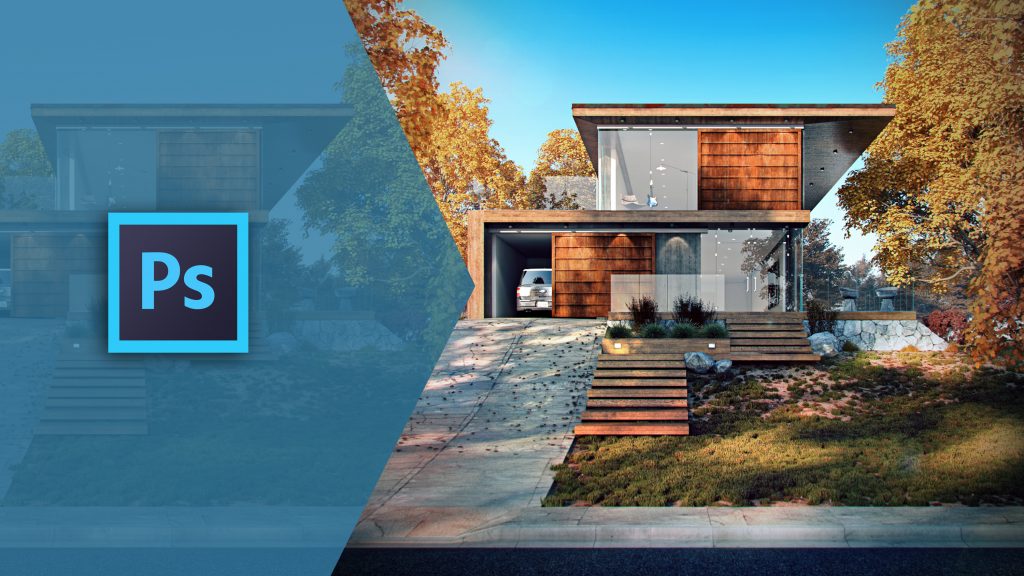Crafting Architectural Marvels: 15 Essential Photoshop Tips for Architects

In the realm of architectural design, where precision and visual finesse are paramount, mastering Adobe Photoshop becomes an invaluable skill for architects. Photoshop serves as a dynamic canvas where architectural concepts transform into stunning visual representations. In this extensive guide, we delve into 15 essential Photoshop tips tailored specifically for architects. From enhancing renderings to streamlining workflows, these tips are designed to elevate your architectural presentations to new heights.
1. Mastering the Pen Tool: Precision in Every Stroke
The Pen Tool is the architect’s digital pencil, offering unparalleled precision in creating paths and shapes. Whether outlining architectural elements or creating custom shapes, invest time in mastering the Pen Tool to achieve clean, precise lines in your designs.
2. Smart Use of Smart Objects:
Smart Objects are the architects’ secret to maintaining image quality and flexibility. Convert layers into Smart Objects to preserve the original resolution during transformations. This is particularly crucial when integrating renderings or high-resolution images into your architectural compositions.
3. Harness the Power of Actions: Streamline Your Workflow
Actions in Photoshop are like customized shortcuts, automating repetitive tasks. Create actions for commonly used processes, such as resizing images, applying specific filters, or adding watermarks. This streamlines your workflow, saving valuable time for the intricate aspects of architectural design.
4. Architectural Visualization with 3D Tools:
Photoshop’s 3D tools offer architects a powerful means of visualizing designs in a three-dimensional space. Import 3D models into Photoshop, adjust lighting, textures, and perspectives, and seamlessly integrate them into your architectural compositions for compelling visualizations.
5. Perfecting Shadows and Lighting:
Realistic lighting and shadows are integral to architectural presentations. Utilize Photoshop’s Shadow/Highlight adjustments to refine the balance of light and shadow in your images. Pay attention to the direction of light sources in your design to create accurate and visually striking shadow effects.
6. Curves Adjustment for Fine-Tuned Tonal Control:
The Curves adjustment is a sophisticated tool for architects seeking precise control over tonal values. Use it to adjust contrast, enhance highlights, or fine-tune the overall tonal balance of your images. This tool is particularly effective in bringing out details in architectural elements.
7. Seamless Integration of Textures:
Texture overlays can add depth and realism to architectural renderings. Experiment with blending modes and opacity levels when integrating textures into your designs. Whether adding a weathered effect to surfaces or incorporating subtle patterns, textures can enrich the visual appeal of your architectural compositions.
8. Effective Use of Layer Masks:
Layer masks provide architects with the ability to fine-tune and control the visibility of elements in a non-destructive manner. Refine selections, create smooth transitions, and seamlessly integrate elements using layer masks. This is particularly useful when compositing various architectural elements into a cohesive design.
9. Creative Exploration with Filters:
Filters in Photoshop open the door to creative exploration. Experiment with artistic filters to give your architectural presentations a unique and stylized look. From painterly effects to abstract interpretations, filters can add a touch of creativity while maintaining the architectural integrity of your designs.
10. Batch Processing for Efficiency:
When working with a multitude of images, batch processing can be a lifesaver. Photoshop allows architects to apply the same adjustments or edits to multiple images simultaneously. This is especially useful for resizing, renaming, or applying consistent color corrections to a set of architectural images.
11. Utilize Custom Brushes for Detailing:
Custom brushes can be invaluable for adding intricate details to architectural renderings. Whether it’s foliage, textures, or fine lines, explore and create custom brushes to enhance the level of detail in your designs. This personal touch contributes to the uniqueness of your architectural presentations.
12. Embrace the Magic of Perspective Warp:
Correcting and adjusting perspectives is a common task in architectural design. The Perspective Warp tool in Photoshop allows architects to precisely adjust the perspective of buildings, elements, or entire scenes. This tool ensures that architectural compositions maintain visual coherence and accuracy.
13. Blend If for Seamless Integration:
The ‘Blend If’ option in layer styles is a hidden gem for architects working with composites. Use ‘Blend If’ to seamlessly integrate elements by controlling how layers blend based on their underlying or overlapping pixels. This technique is particularly effective when merging different architectural elements or combining renderings with photographic backgrounds.
14. Maintain Color Consistency with Color Lookup Tables:
Color Lookup Tables (LUTs) are powerful tools for maintaining color consistency across various architectural images. Create custom LUTs to ensure a cohesive color palette throughout your presentation. This is especially useful when working on projects with multiple renderings or visualizations.
15. Presentation-Ready Mockups with Smart Objects:
Architectural presentations often involve showcasing designs in real-world scenarios. Use Smart Objects to easily integrate architectural renderings into mockup templates. This allows you to present your designs in context, whether it’s a billboard, brochure, or digital display.
Conclusion: Architectural Mastery in Pixels
In the digital age, the fusion of architectural design and Photoshop proficiency is a formidable combination. These 15 essential Photoshop tips for architects serve as a roadmap to harness the full potential of this versatile tool. From mastering precision with the Pen Tool to embracing the magic of 3D visualization, architects can now navigate the digital realm with confidence and creativity. As you embark on this journey, remember that Photoshop is not merely a software; it is an extension of your architectural vision, a canvas where your designs come to life in pixels and perfection. May these tips be your guide as you craft architectural marvels with precision, creativity, and the mastery of Photoshop.




